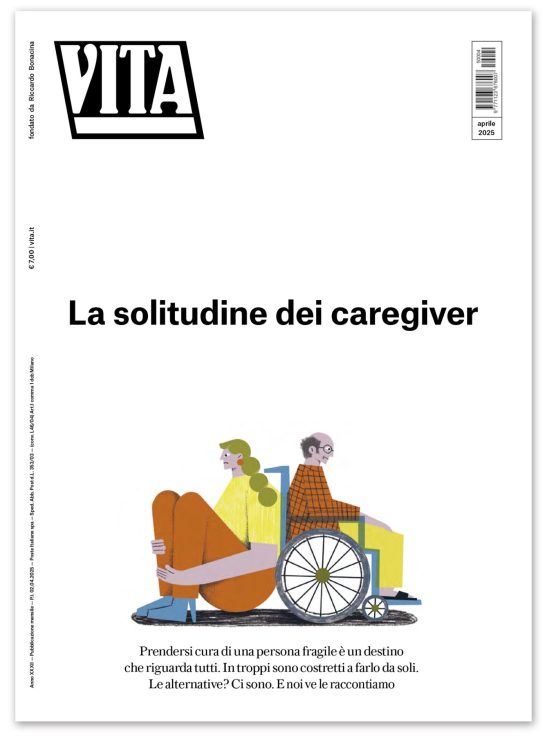Non profit
Italy: the third sector
The third sector is no longer an outsider actor in the Italian economy.
di Rita Meloni

Sector overview
The third sector is no longer an outsider actor in the Italian economy. On the basis of the first research about non profit organisations carried out by the Italian National Institute of Statistics (ISTAT), called “Census of the non profit sector in 2001”, the civil society accounts for 235,232 organisations. Together they make up 5.4% of all Italian business. Half of these organisations are found in the North of Italy, 20% in the Centre and 30% in the South. About 90% of Italian non profit organisations says that the private sector is the main source of income, while 12.9% declare that their income comes essentially from the public sector and only 0.2% declare to have no income at all.
63.3% of the Italian third sector organisations are unrecognised associations, recognised associations form 27.7%, 2.1% are social cooperatives, 1.4% foundations, and 1.7% committees. The remaining 3.6% are mutual societies or religious institutions.
Considering the non profit organisations by type of activity, the data of ISTAT census 2001 shows that more than half, 63.1% (about 140,391 institutions), operates in the field of culture, sport and recreation.
The next largest area of involvement is social services and health care (8.7%), followed by:
– 7.1% trade union relations and representation of interests,
– 5.3% education and research,
– 4.4% health
– 3.1% protection of rights and political activity.
– 2.7% religious promotion and training
– 2% economic development and social cohesion
– 1.5% environment
– 0.7% international cooperation and solidarity
– 0.6% philanthropy and the promotion of the voluntary sector
Between 2003 and 2007, the ISTAT census of the non profit sector in 2001 was updated with a focus on the following list of organisations:
Voluntary organisations: the ISTAT survey voluntary organisations census in 2003 says that there are 21,021voluntary organisations with an increase of 14% since 2001.
Source of income: 65% of voluntary organisations declare that private sector is their main source of income.
Territorial distribution: more than half are based in the North, while 19.3% operate in the Centre and 20.7% in the South.
Type of activities: voluntary organizations operate most in the social assistance and health care activities, respectively 37,3% and 28% of total of voluntary organisations are involved in these fields of work.
Paid workforce: about 867,000 people are involved in voluntary organisations, of which only 41,000 are paid staff while the rest are volunteers.
Volunteer workforce: the majority of voluntary organisations, about 70%, work predominantly with volunteers as unique form of human resource available.
Social cooperatives are 7,363 with an increase of 20% since 2003 according to the latest ISTAT census on social cooperatives in 2005. They have been established as a new business model in Italy since 1991.
Law divides social cooperatives into three categories:
– A type social cooperatives carry out activities in the fields of health, social or educational services.
– B type act to integrate disadvantaged people into the labour market
– Mixed type, that made both activities.
Source of income About 66% of social cooperatives’sources of income come from the government. A type social cooperatives resort to public funds more often than B type. 72.8% of A type social cooperatives declare to use public funds as the main source of income against 53% of B type.
Territorial distribution: A type is the most widespread form representing 59% of the total, about 4,345. More than one third (33,8%) of the social cooperatives are based in the South of the country.
Type of activities: In 2005 more than 3.3 million of Italian have used health, social and educational services offered by A type social cooperatives, with an increase of about 40% since 2003. About 30 thousands of disadvantaged people have got a job working for B type social cooperatives.
Paid workforce: Social cooperatives use most paid staff than volunteers. In 2005, about 278,849 people work in social cooperatives of which 244,223 are employee.
Volunteer workforce: In 2005, there are about 34,626 volunteers involved in social cooperatives, that account for 12% of total ofpeople involved in this organizations.
Foundations: the ISTAT census on foundations in 2007says that there are 4,720 foundations in Italy in 2005 with an increase by 57% since 1999.
Source of income: in 2005, Italian foundations have registered an income of about 15.6 billion euros, with an average income of about 3.3 billion euros each foundations. However the majority of Italian foundations have small dimension with an income that is less than 500,000 euros, only 6.4% of Italian foundations have income that is more than 5 million euros.
Territorial distribution: More than half of Italian foundations are based in Northern Italy and more than one third have been established since 1990.
Type of activities:social welfare and culture represents the two fields of activity on which Italian foundations are more interested in, respectively 17.3% and 16.5% of the total. The majority of Italian foundations, about 25%, operate in the field of philanthropy and promotion of the non profit sector. The rest, about 21%, work in the education and research area, followed by 17% of foundation that operate in the culture, sport and recreational activities.
Paid workforce: about 156,256 people work in foundations, of which 106,137 are paid staff
Volunteer workforce: there are only 50,114 volunteers, that represent 32% of people involved in foundations.
The Italian non-profit sector is also made up of:
284 Consortium, revealed by the ISTAT census on social cooperatives in 2005
239 Non Governmental Organisations, registered by the Ministry of Foreign Affairs in 2007
141 Associations of Social Promotion estimated by the National Council of Economics and Labour and ISTAT, in the first report on social economy published in 2008
Nessuno ti regala niente, noi sì
Hai letto questo articolo liberamente, senza essere bloccato dopo le prime righe. Ti è piaciuto? L’hai trovato interessante e utile? Gli articoli online di VITA sono in larga parte accessibili gratuitamente. Ci teniamo sia così per sempre, perché l’informazione è un diritto di tutti. E possiamo farlo grazie al supporto di chi si abbona.
